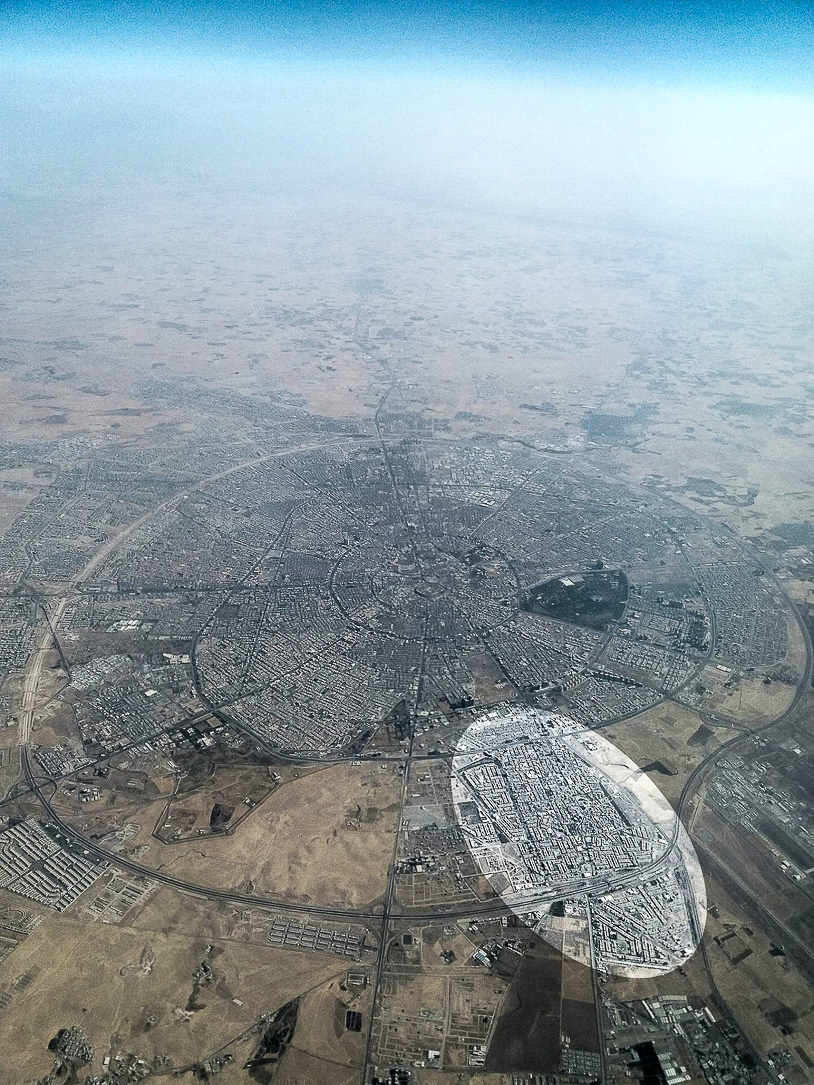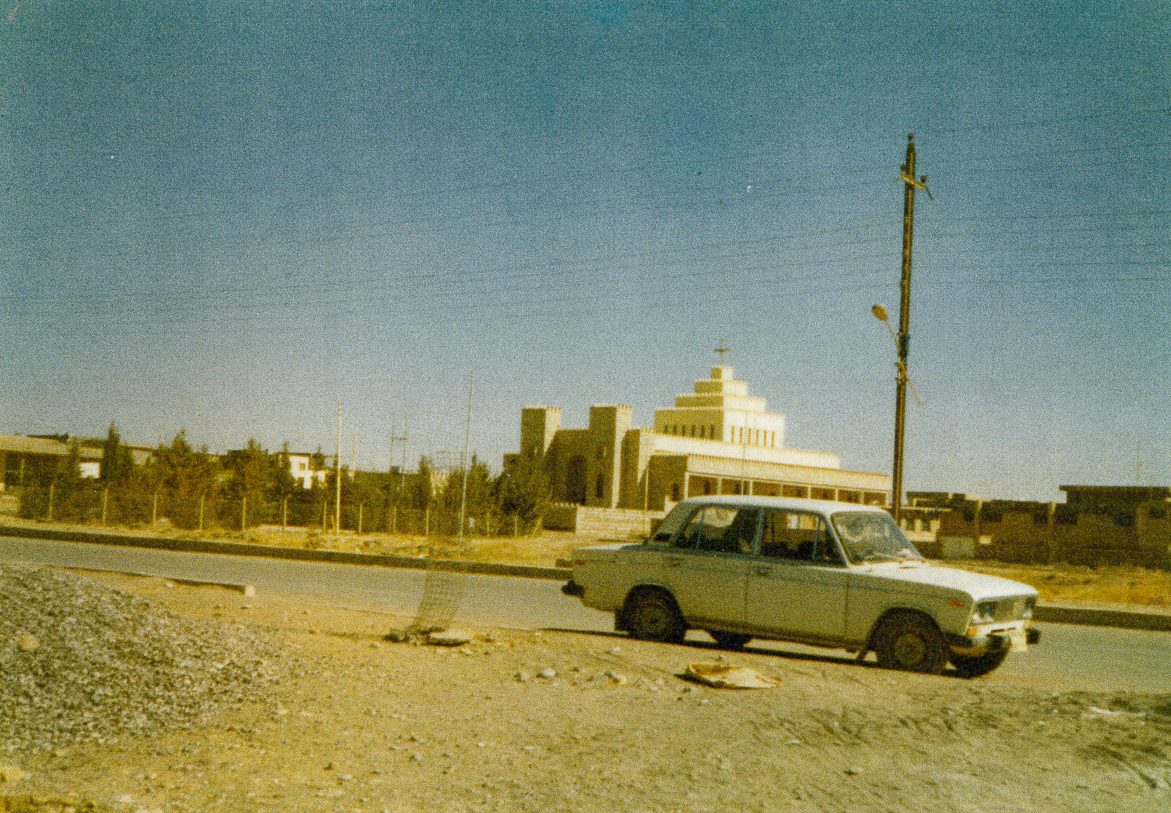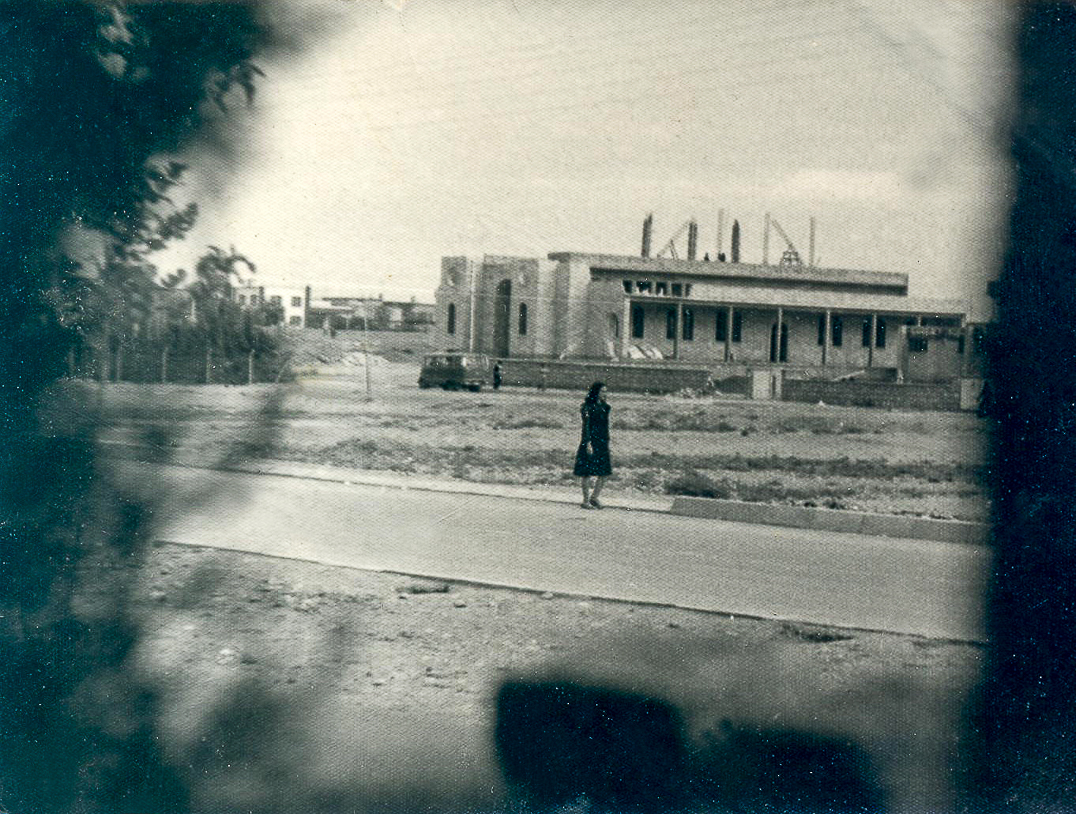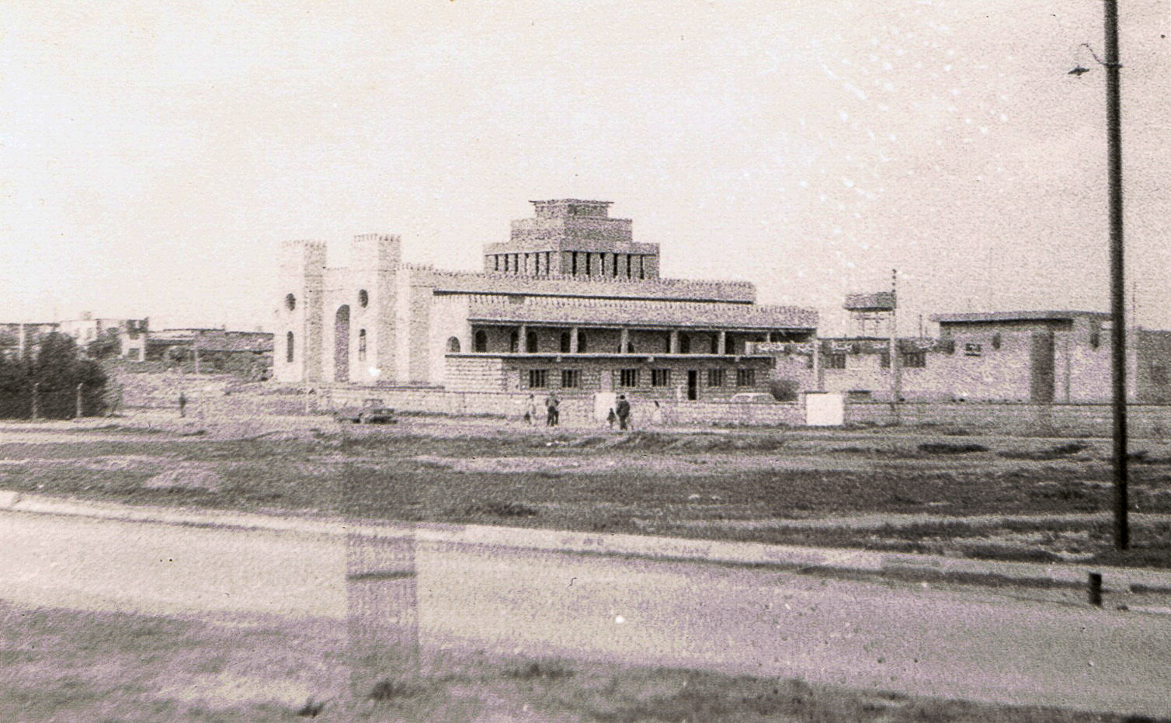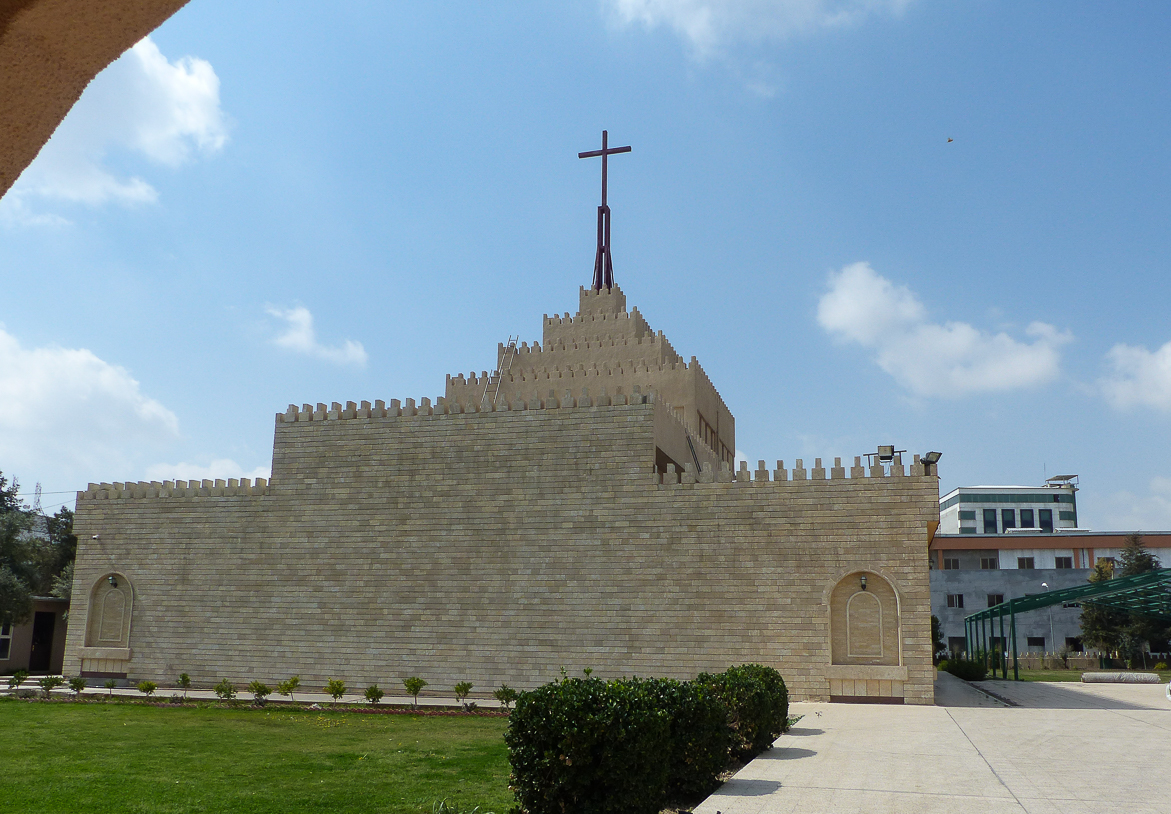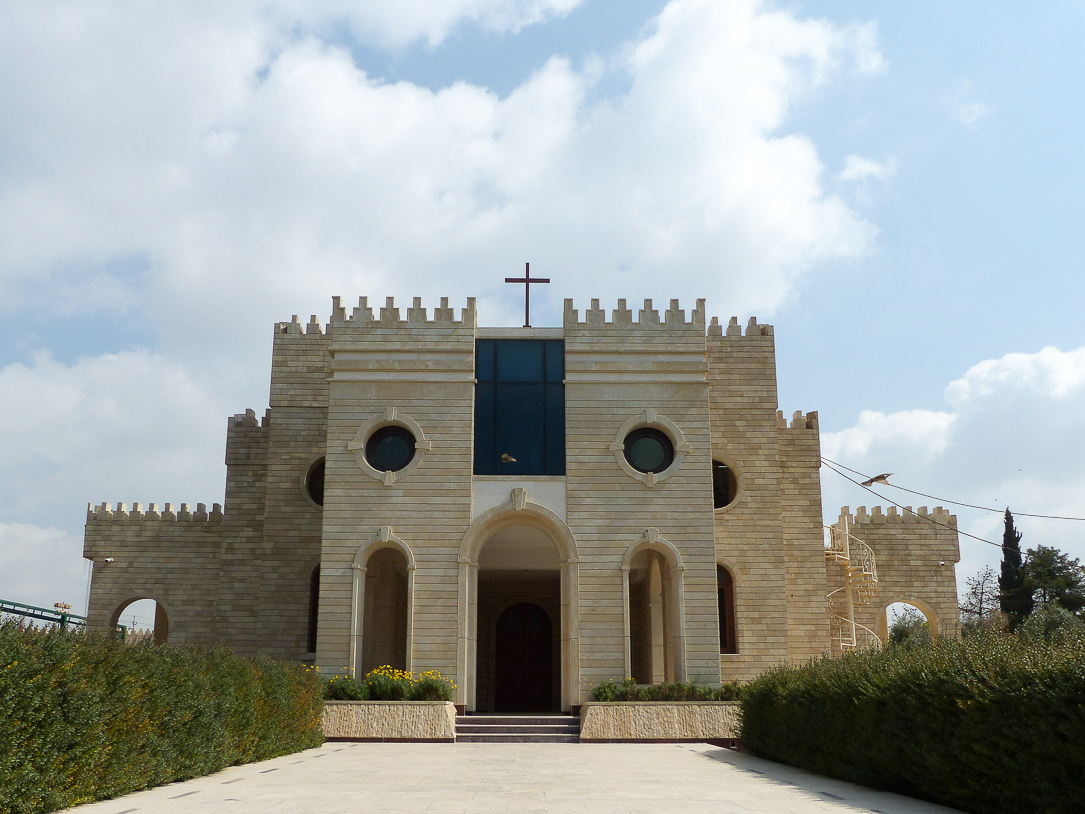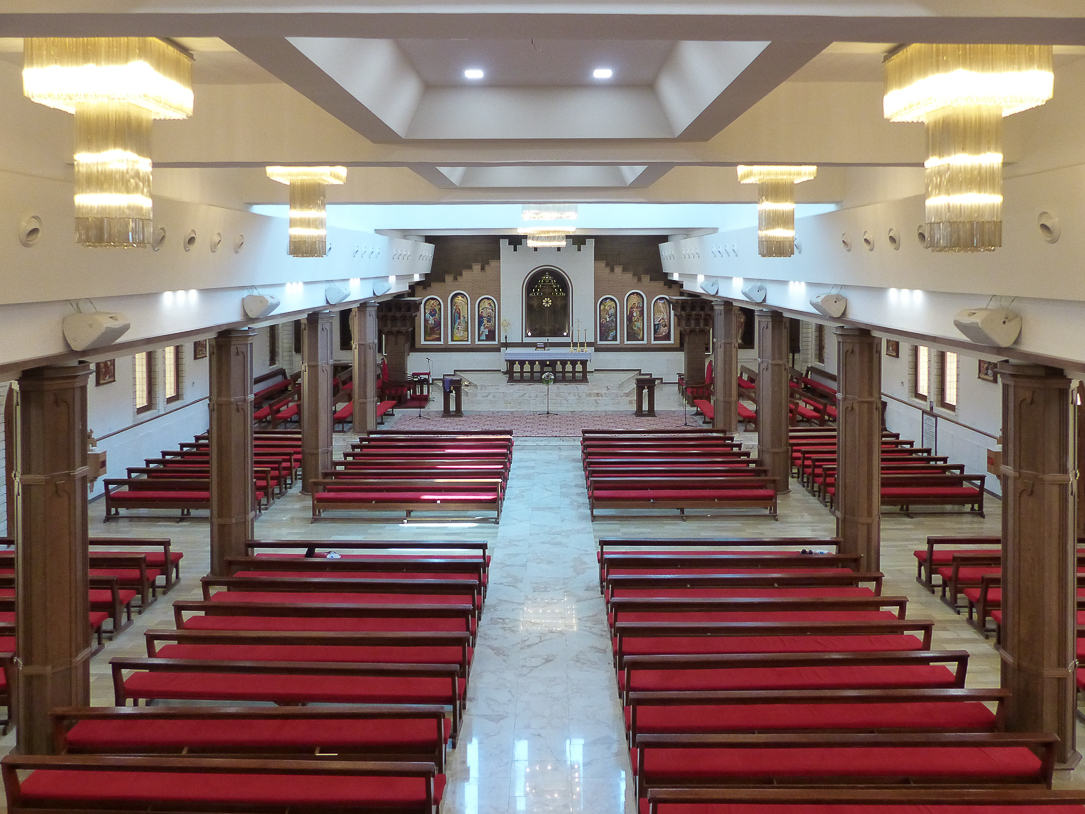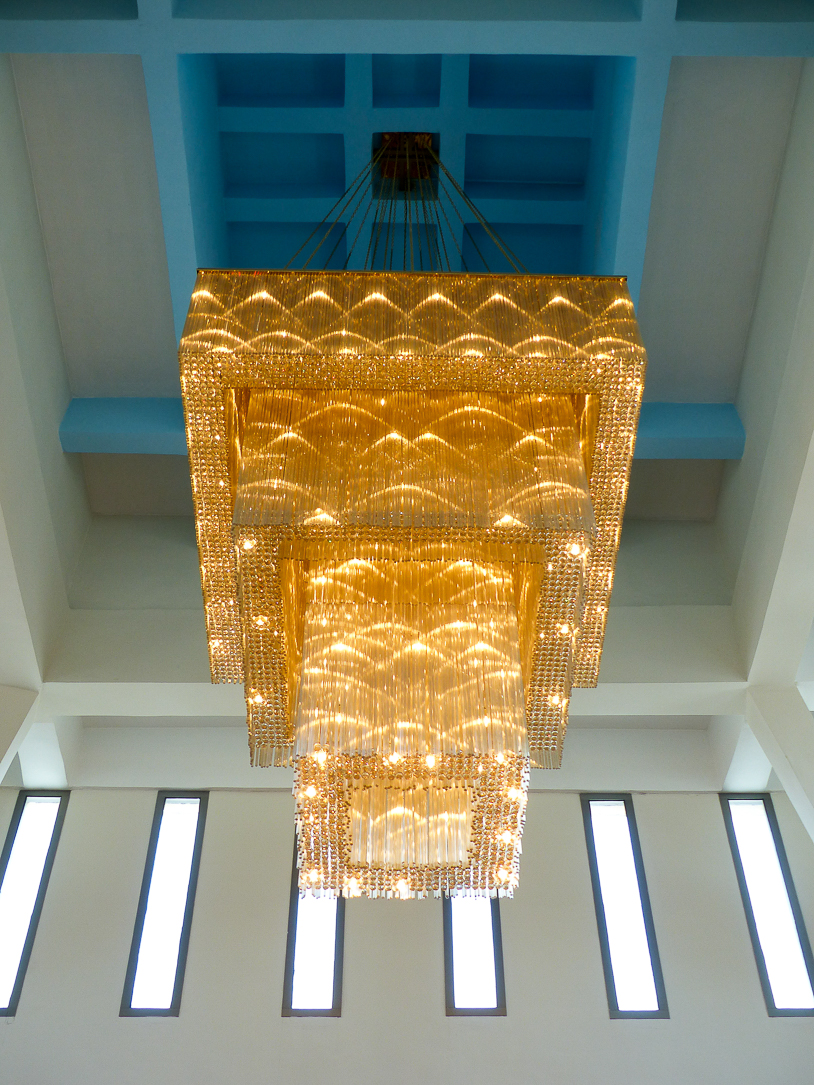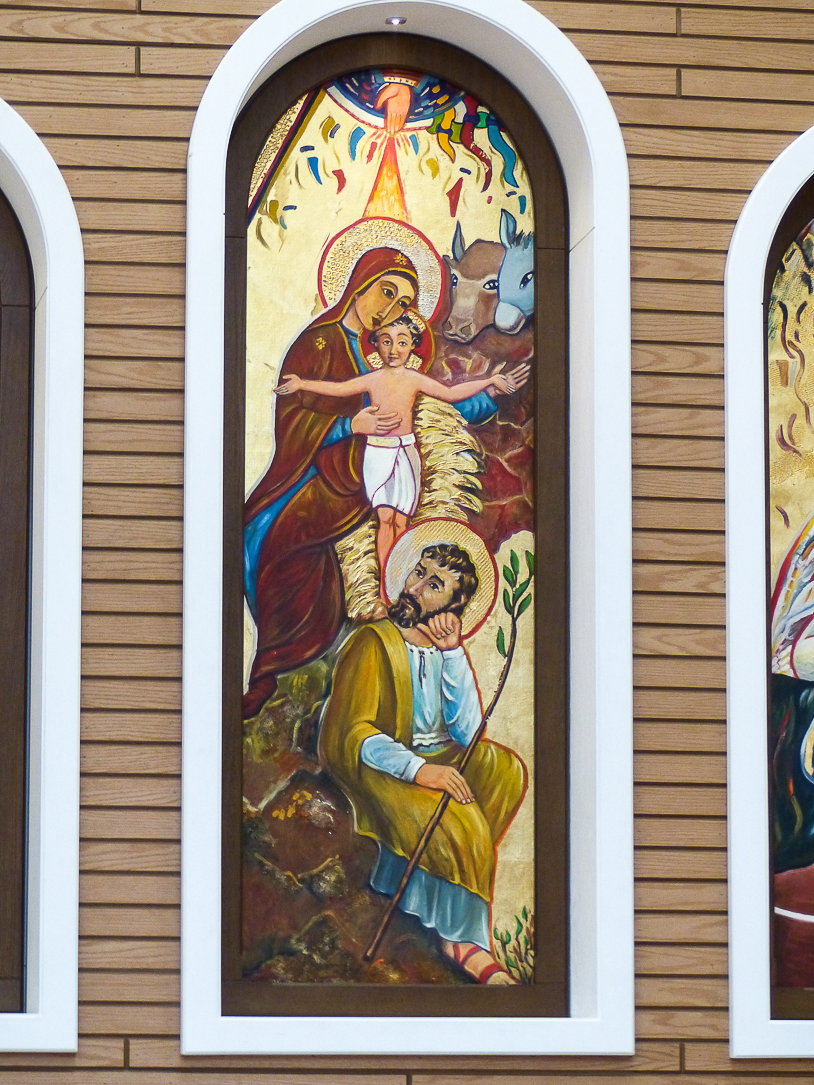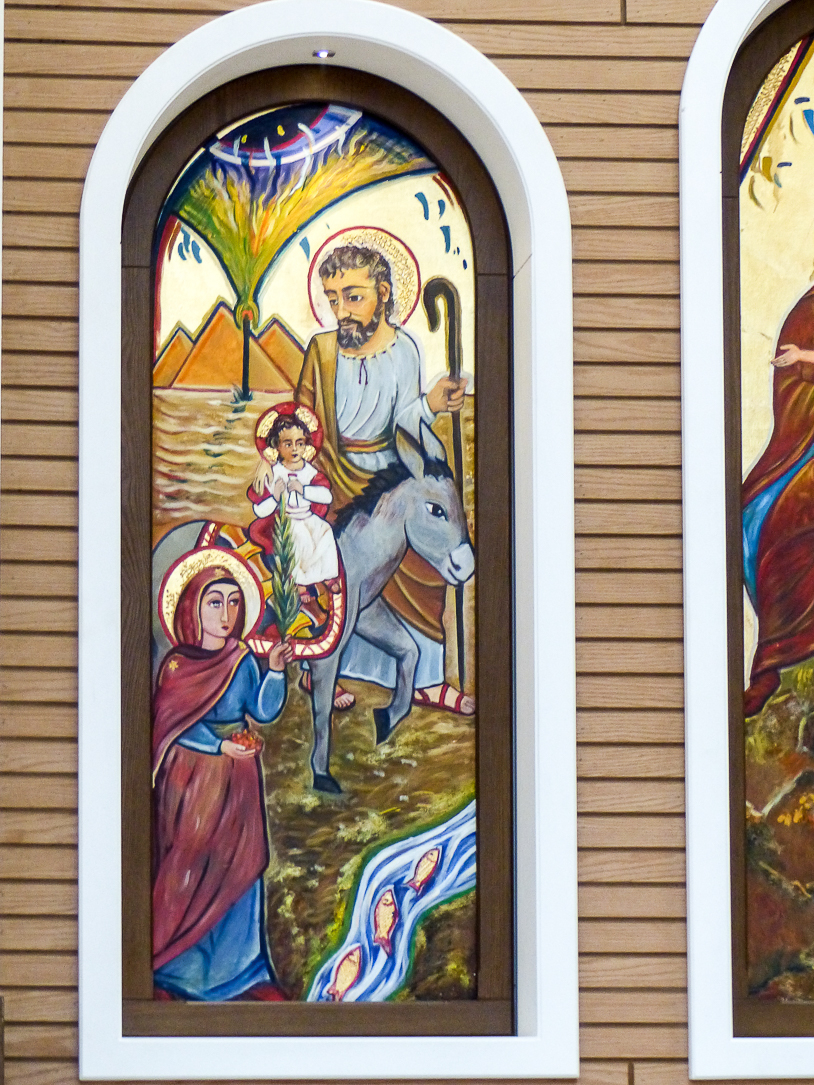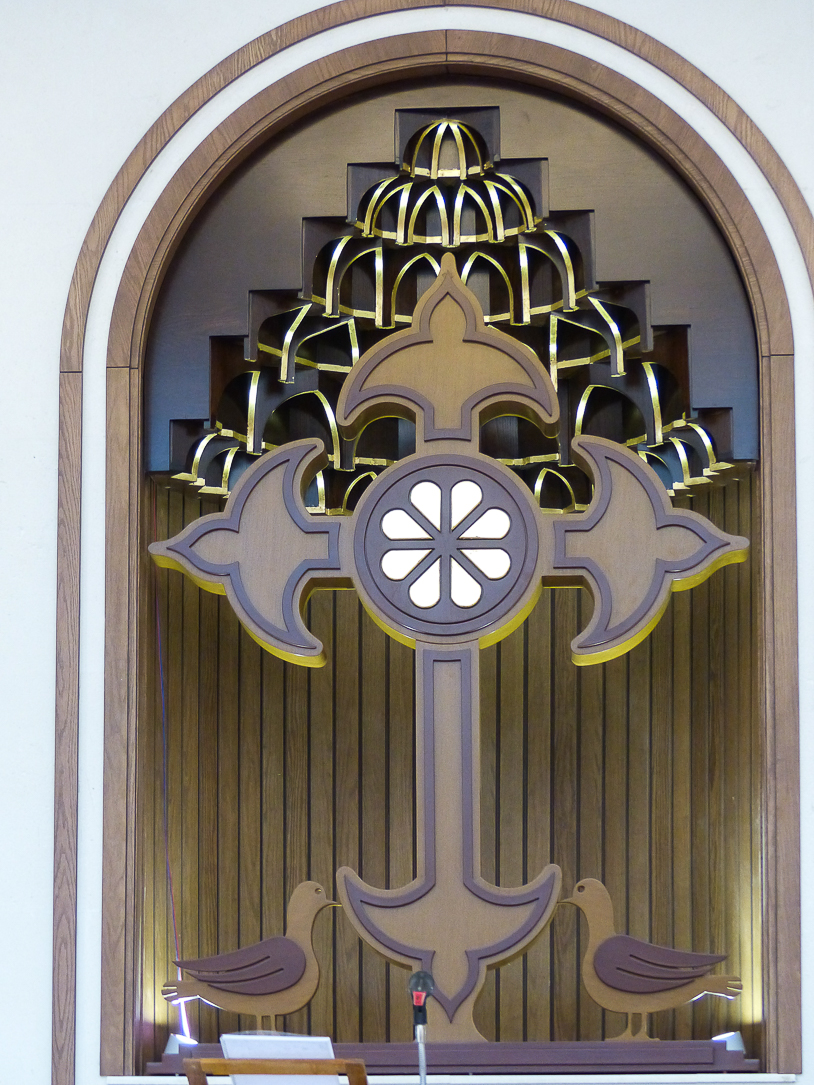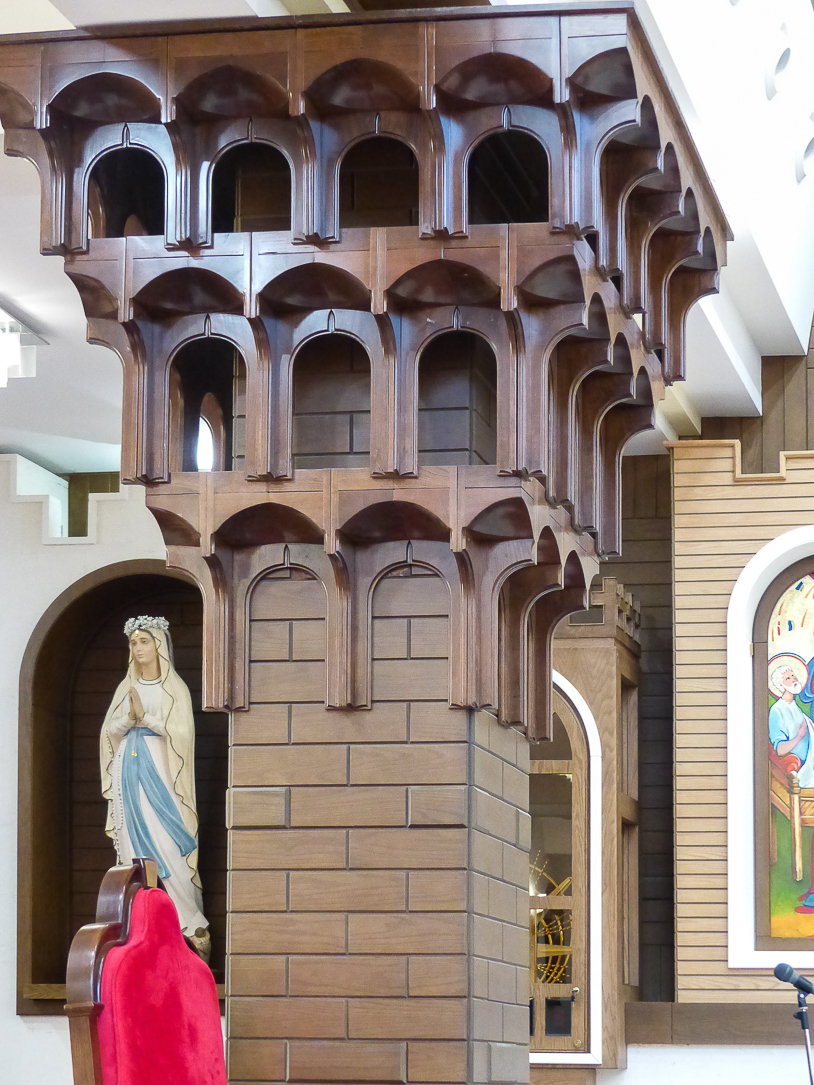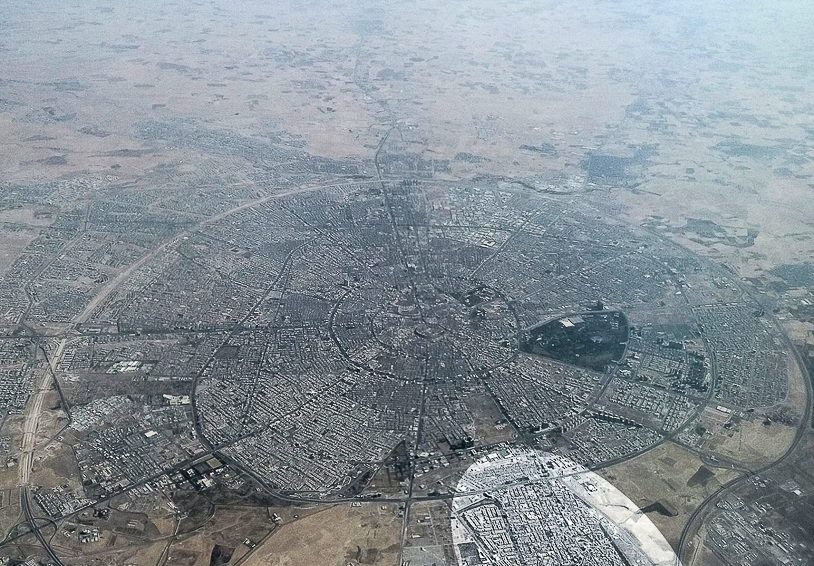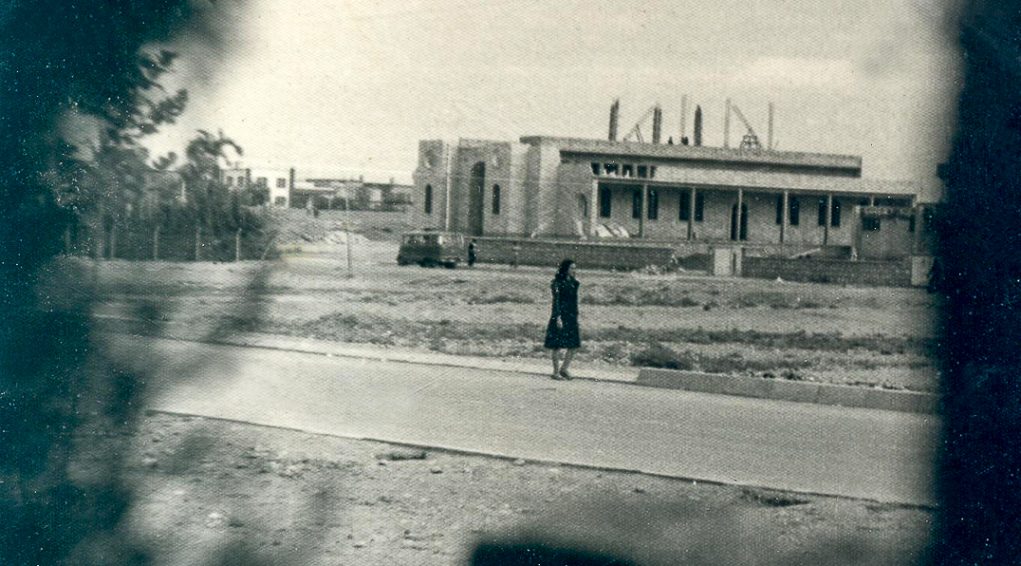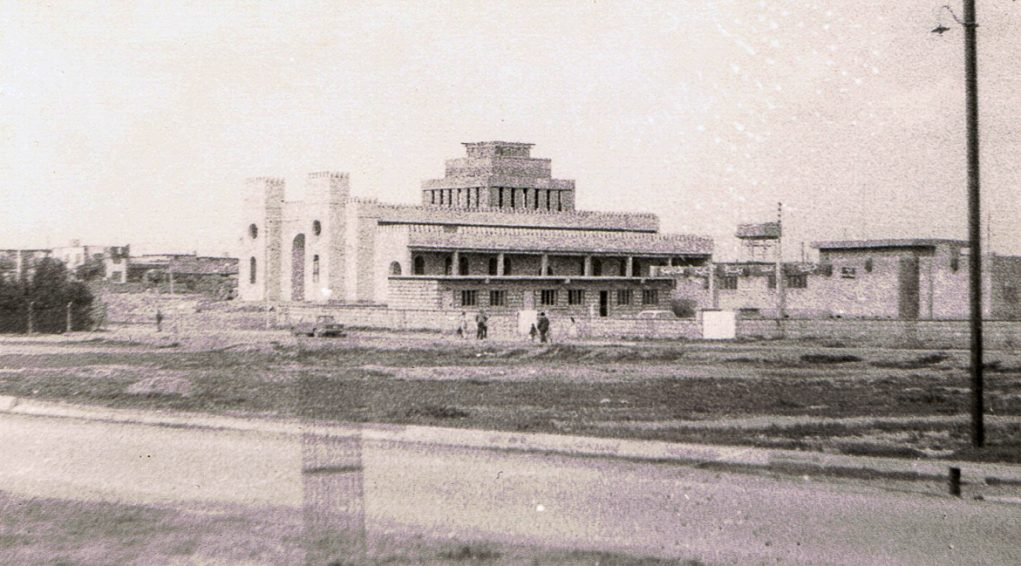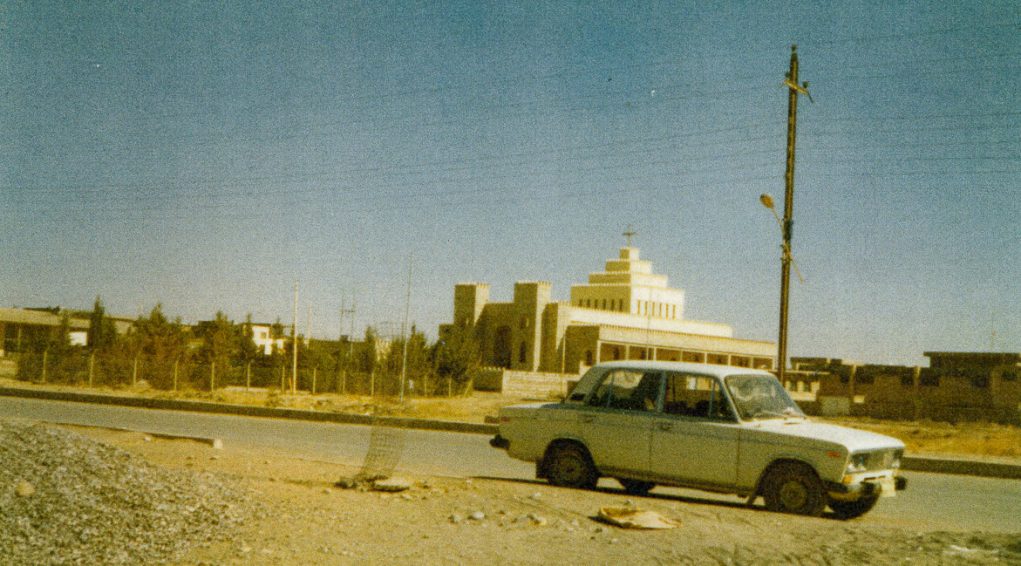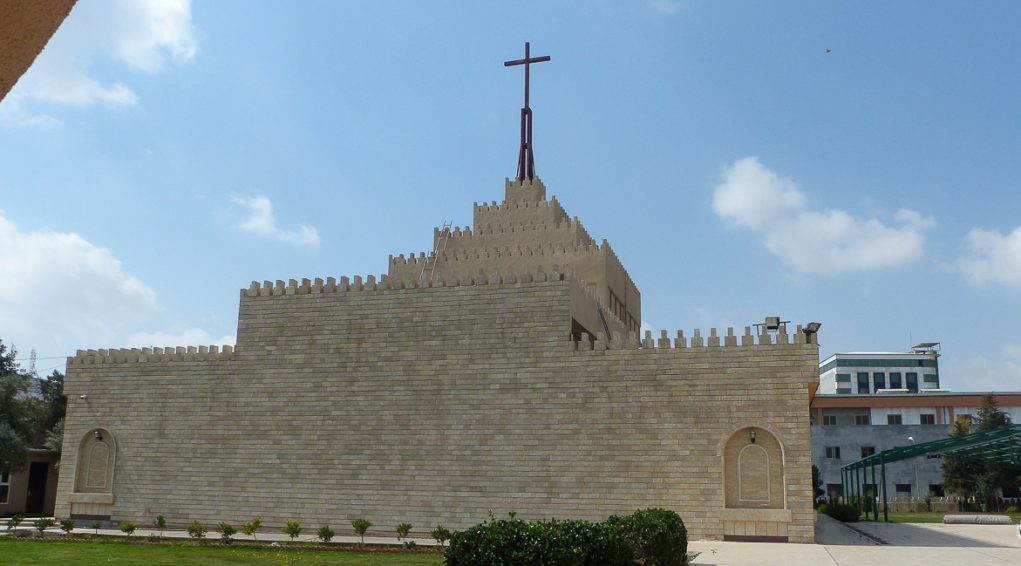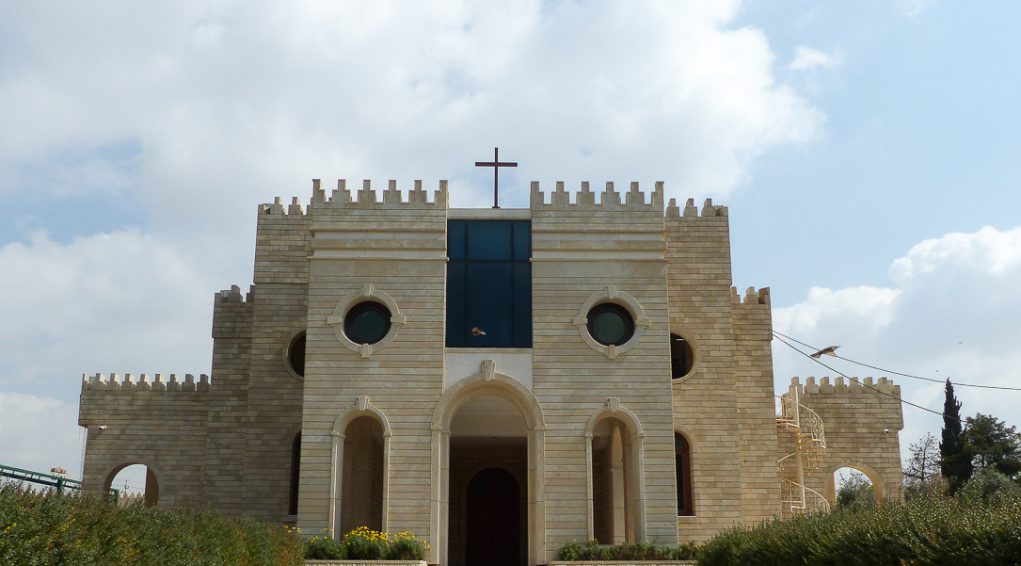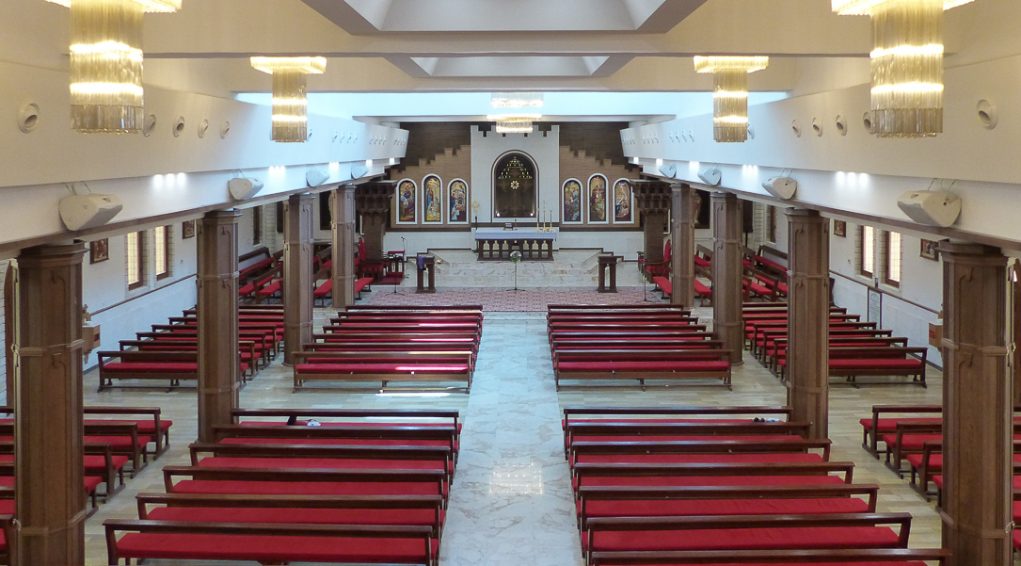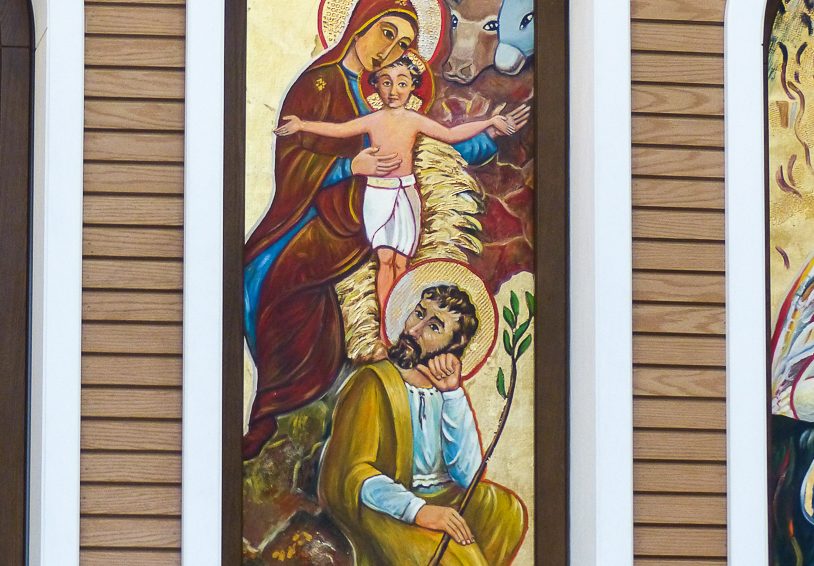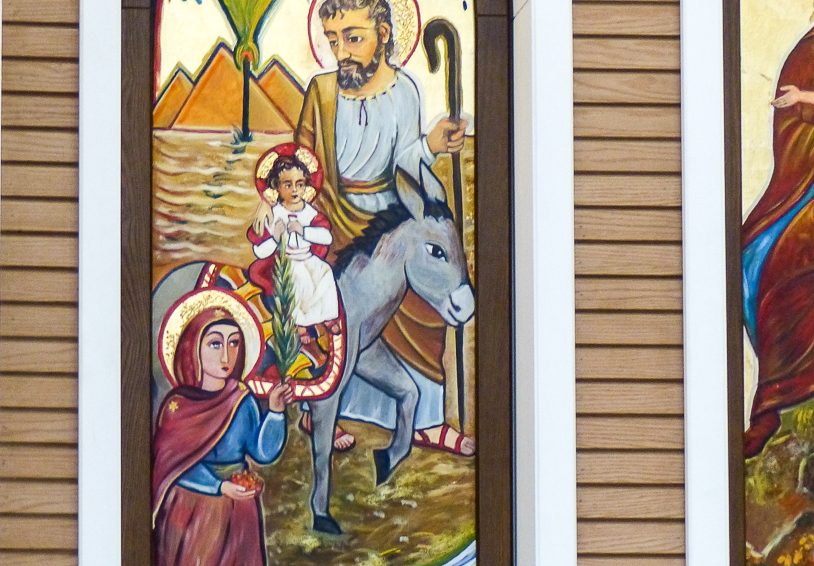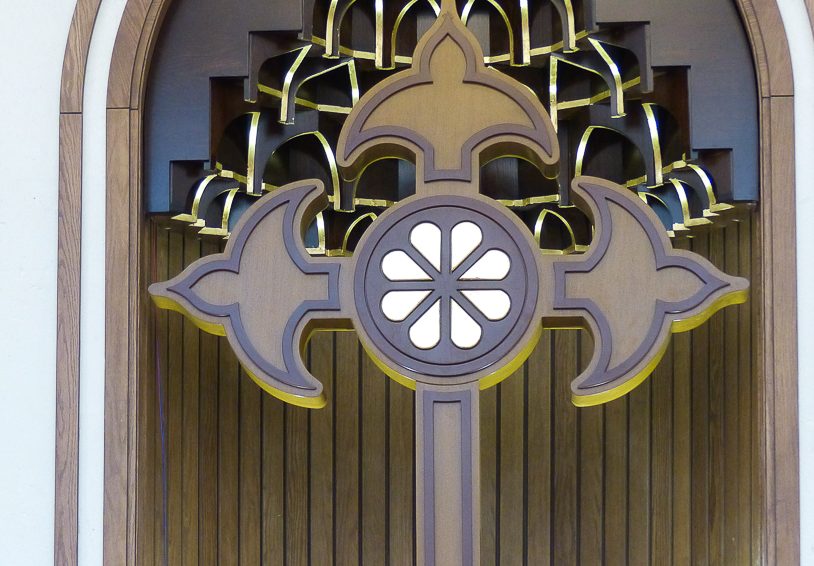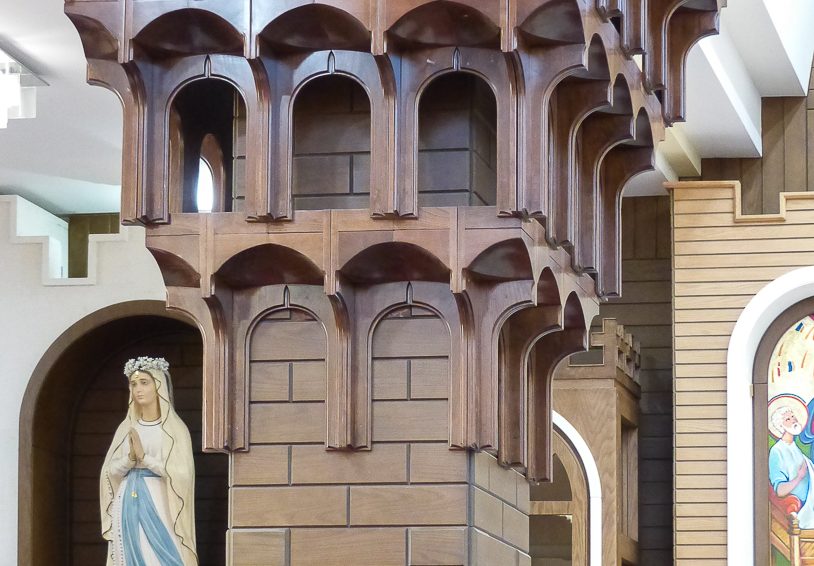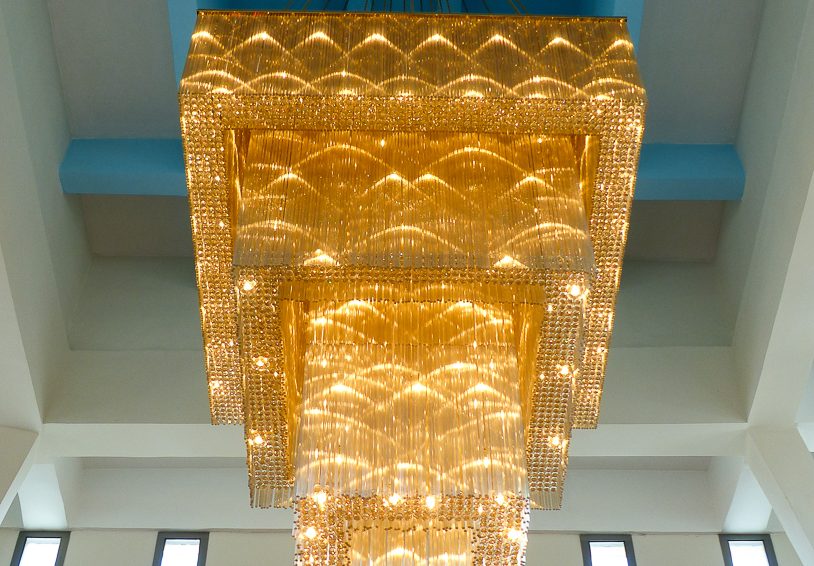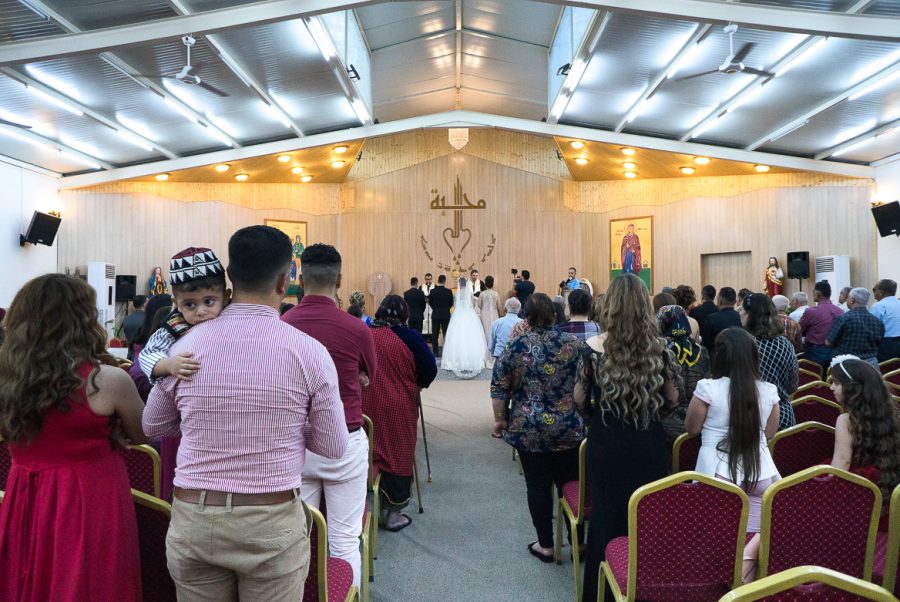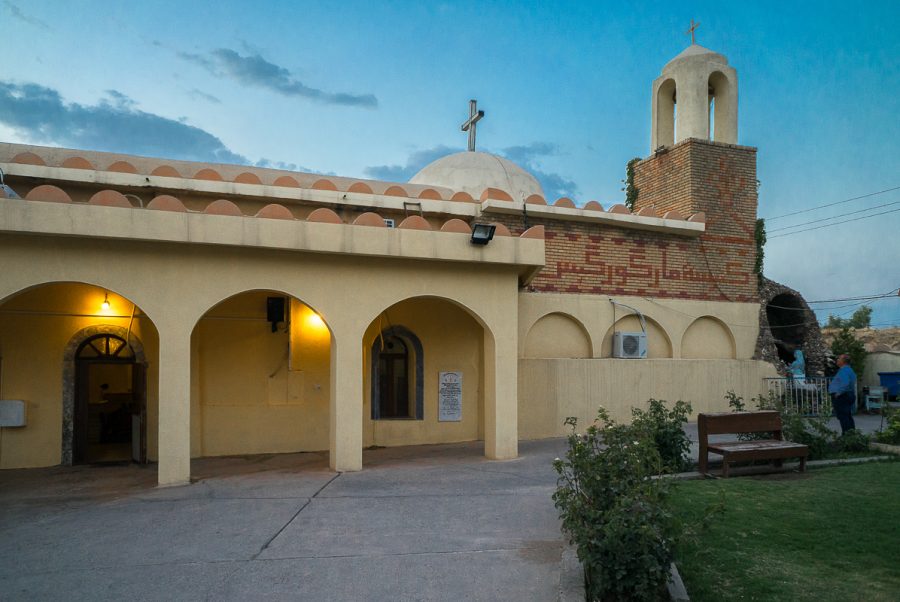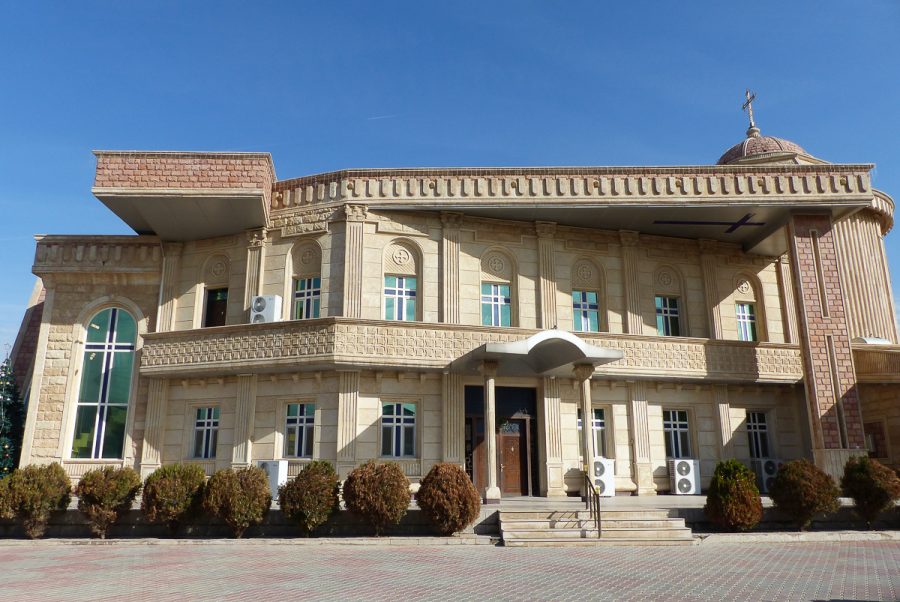The Mar Youssef cathedral in Ankawa
The Mar Youssef cathedral is located in Ankawa, at 36°13’38.46″N 43°59’31.50″E and 410 metres’ altitude in Ankawa (Erbil)
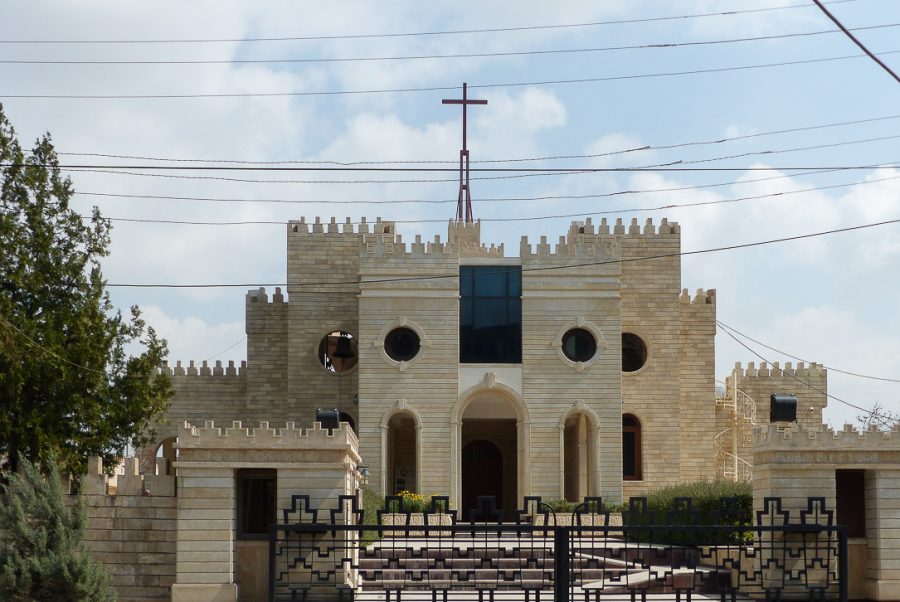
The archdiocese of Erbil was created in 1969 to keep pace with the increase in the Christian population in the region. The first bishop of the diocese of Erbil, Monsignor Stéphane Babaqa (1969 – 1993) initiated the construction of a cathedral and adjoining archdiocese under the patronage of Mar Youssef (Saint Joseph). The Mar Youssef cathedral was consecrated on 7th April 1981. It was fully modernised and expanded in 2017.
The twinning of the archdioceses of Lyon and Mosul was launched on 29th July 2014 in the Mar Youssef cathedral in Ankawa, with a mass jointly celebrated by the Chaldean Patriarch Louis-Raphael I Sako and the Cardinal and Archbishop of Lyon, Philippe Barbarin.
Pic : Saint Joseph’s cathedral in Ankawa. Façade. March 2018 © Pauline Bouchayer/ MESOPOTAMIA
Location
The Mar Youssef cathedral is located in Ankawa, at 36°13’38.46″N 43°59’31.50″E and 410 metres’ altitude.
Ankawa used to be a small village outside the northern gate of the Erbil[1] citadel (Amkabad gate). Ankawa is today fully integrated into the Erbil metropolitan area, although its centre of gravity remains the citadel around which the town is organized and from which it expands in concentric circles.
Capital city of the autonomous region of Iraqi Kurdistan, Erbil is a plain city with 1.5 million inhabitants, located 30 km east of the Great Zab, a tributary of the Tigris, 80 km east of Mosul and 25 km south of the southern border of the Kurdish mountains.
_______
Fragments of history and demographics
Erbil, also referred to as the ancient Assyrian city of Arbeles, is quite close to the presumed location of the plain of Gaugamela, where the famous battle took place, offering Alexander the Great a large victory on the Persian Darius III in 331 BC. Former capital of the Assyrian kingdom of Adiabene, passed around between the Parthenian, Roman and Armenian empires, the region is known for being home to one of the 1st century Jewish communities in Mesopotamia which the first Christians no doubt attempted to convert. “It is not known which communities were evangelised, but it is reasonable to assume that the first converts were members of the Jewish community which was predominant throughout Mesopotamia, and even beyond the Tigris, since the deportation of Babylon under Nabuchodonosor. It is likely that this community was one of the first targets for evangelisation, as had been the case in towns throughout the Roman Empire.”[1] Once again, the first stages of this evangelisation are said to have been the missions of the apostles Thaddeus, Bartholomew and, most especially, Thomas and their disciples. The tradition recounts that Thomas “stopped in Seleucia-Ctesiphon during his journey to India.”[2]
At the very beginning of the 4th century, the area of Abadiene, which was then the most southern territory of the kingdom of Armenia, became the very first Christian “state” in History, around 301. “There was also probably a meeting in around 328-329 between the only two Christian sovereigns at that time: the Roman Emperor Constantine I and the Armenian King Tiridates III. Constantine I confirmed Tiridates III’s role in evangelising the East. This led to the evangelisation of Mesopotamia and the Sassinid kingdom by Armenian missionaries, as related by the Greek historian Sozomen, in around 402: “The belief progressed amongst neighbouring peoples and grew in number, I think the Persians became Christians due to the close relationships they had with the people of Osroene and the Armenians (…)”[3].”Having become the episcopal see, the Christian city of Erbil came face to face with Islam during the Muslim conquests and the Abbasside caliphate as of the end of the 7th century, opening the way for the Islamisation of the whole region which continued uninterrupted to the present day with its litany of conquers: the Seljuq, Mongols, Persians, Atabegs, Ottomans and Kurds.
At the very beginning, the Christians from Erbil and Ankawa were members of the Apostle Assyrian Church of the East but they progressively turned to the Chaldean Catholic Church. This mainly ran through the 18th century. And just like the people, the buildings and architectural heritage were transferred from one church to the other.
In the last quarter of the 19th century, the French Dominican missionary Jacques Rhétoré while passing through Erbil wrote that “apart from a few Jewish families, the whole population is Muslim and can number 12 – 15,000 people. Not a single Christian lives in Erbil, whereas there used to be a lot of them in this city, which used to be a place of residence of a Catholic bishop. The Christian population has been persecuted and humiliated in this town for ages, and henceforth has left to settle not far from here, in a place which is today the Chaldean village of Ainkawa (…). Six priests lead today this community of around 250 families.”[4]
_______
[1] In Histoire de l’Église de l’Orient, Raymond le Coz, Éditions du Cerf, 1995, p.22
[3] In “Arménie, un atlas historique”, p.22 and map p.23. Publisher Sources d’Arménie, 2017.
[4] In Voyage d’un missionnaire dans les provinces de Kerkouk et de Solimanié de l’empire turc , Année dominicaine, 1879. P. 492-493.
The modern era
At the beginning of the 21st century, as if rewriting History, Erbil has regained its influence as a major Christian centre. The city of Ankawa, north of the city, has welcomed tens of thousands of Christians from Baghdad, Mosul, from the Nineveh plain or from Basra, all fleeing anti-Christians persecution from the Islamic and mafia groups that have thrived since the United States invaded Iraq in 2003. The refugee policy to welcome Iraqi Christians in the Kurdish part of northern Iraq, implemented by the president of the autonomous Kurdish regions in northern Iraq, Massoud Barzani, is clearly perceptible in Erbil-Ankawa. Besides refugee camps for Christians and Yazidis, new, large churches for all denominations have been constructed, and thousands of Christian families have settled for good in the town. Many schools and medical centres, all run by churches, have been built and the Babel College has even been transferred from Baghdad… These varied and multiple initiatives have strengthened the Christian revival in Ankawa. Many Christian NGOs working in the fields of international solidarity and also different churches throughout the world have also taken advantage of this policy as they develop fraternal links with their counterparts in Erbil-Ankawa. One such example of this are the regular visits since 2008 by the French bishops Marc Stenger, Michel Dubost, Pascal Gollnish and Philippe Barbarin.
Launch of the twinning of Lyon-Mosul at Mar Youssef
The twinning of the archdioceses of Lyon and Mosul was launched on 29th July 2014 in the Mar Youssef cathedral in Ankawa, with a mass jointly celebrated by the Chaldean Patriarch Louis-Raphael I Sako and the Cardinal and Archbishop of Lyon, Philippe Barbarin.
It is one of the most profound and fertile examples of the revival.[1]
_______
[1] See the website www.http://lyonmossoul.fr
History of a construction
The archdiocese of Erbil was created in 1969 to keep pace with the increase in the Christian population in the region. Erbil was previously part of the diocese of Kirkuk.
The first bishop of the diocese of Erbil, Monsignor Stéphane Babaqa (1969 – 1993) initiated the construction of a cathedral and adjoining archdiocese under the patronage of Mar Youssef (Saint Joseph).
This very common patronage in the Chaldean church was requested by Monsignor Babaqa who prayed to Saint Joseph for the building of the archdiocese.
The Iraqi government funded the construction of the cathedral. The work began in 1978 and ended in 1980. The Mar Youssef cathedral was consecrated on 7th April 1981.
At this time, the cathedral was located on the southern border of Ankawa which was still just a small village. Nowadays, urban sprawl has made Ankawa a relatively large town within the Erbil metropolitan area. The Mar Youssef cathedral and Chaldean archdiocese are now part of the urban centre of Ankawa which continues to develop with the arrival of displaced Christians who choose to settle in the city for good.
Ankawa, whose population is largely Christian, is a haven of peace for the Christians of Iraq in a country undergoing a political and denominational upheaval. For all these reasons, in the 1990s and 2000s the Mar Youssef cathedral became a focal point for the Chaldean community.
Description of the church from its construction up until 2017
In 1978, a Mosul-based engineer was asked to draw up the plans for the construction of the Mar Youssef Chaldean cathedral in Ankawa.
It was a Babylonian building, reflecting the Chaldeans’ roots and heritage. The church is built in the form of a ziggurat, reproducing the characteristic style of ancient Mesopotamia, but with different materials and construction techniques.
The first modest renovation work was carried out in 2007, before the church was fully modernised and expanded in 2017, a project overseen by Monsignor Bashar Warda, 5th Chaldean bishop of Erbil (since his episcopal ordination on 3rd July 2010).
The bishop entrusted the work to the architect Petros Khammo, originally from Baghdad, who himself had been displaced and had settled in Erbil in 2010. An architect specialised in the construction and renovation of churches, he was assisted in this project by another architect Fadi Matloub.
The Mar Youssef church was extended lengthwise and a tribune was added to the far end of the church, along with an entrance porch.
Additional ornamental and decorative features were added. Originally aniconic, the Chaldean church, born out of the 16th century schism in the Church of the East, progressively moved towards pictorial, decorative and ornamental symbolism, notably after Vatican 2 and with a particular upsurge in figurative representations in the 1990s when numerous church reconstruction/modernisation projects were carried out.
Six icons, painted by the Iraqi artist Bessam Sabri, representing the life of Saint Joseph thus adorn the wall of the apse chapel behind the high altar of the Mar Youssef cathedral. They are inspired by paintings found on Chaldean manuscripts, recovered from monasteries in the region.
In the middle of the wall, a large niche contains a wooden cross measuring around 1.5 metres, with two doves at its foot. This niche is carved with semi-circles, reminiscent of the honeycomb architectural style seen in mosques and churches throughout the region. These niches also loosely inspired the wooden decoration on the pillars either side of the altar.
The centrepiece of the Mar Youssef cathedral is undoubtably the monumental chandelier, in the form of an inverted ziggurat, suspended from the vault in the centre of the church. It weighs 1,750 kg and is made up of 3,700 parts. It took 12 days to put into place. Designed by the architectural firm tasked with the restoration of the cathedral, the parts were manufactured in China. A series of more modest reproductions light up the central aisles of the church.
There are also four tombs in the cathedral complete with inscriptions. They are those of the bishop Hanna Mlro, Yacoub Sherr, bishop Stéphane Babaqa and Andraus Abouna (secretary to the Patriarch, who died in Erbil whilst visiting his brother).
Monument's gallery
Monuments
Nearby
Help us preserve the monuments' memory
Family pictures, videos, records, share your documents to make the site live!
I contribute
